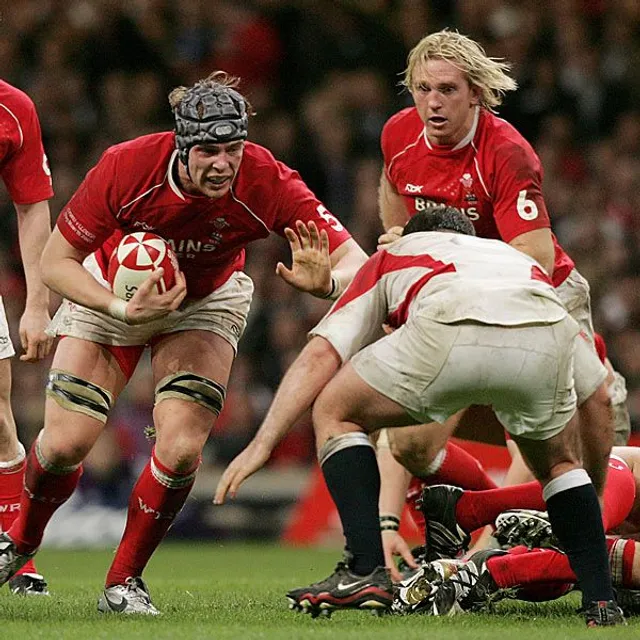Introduction to Rugby
How to play rugby for beginners? Welcome to the energetic world of rugby, a sport loved globally for its vigor and strategy. This guide aims to walk you through the basics of how to play rugby for beginners. As a beginner, grasping the rules might seem complex, but we’ll break it down to make it simple and clear.
Rugby combines physical strength, speed, and teamwork all in one dynamic and intense game. Two teams, each with the goal of outscoring the other, battle it out on a rectangular field. Points are scored in several exciting ways, such as carrying the ball over the opponent’s goal line or kicking it through goalposts.
The rugby ball, unlike the balls used in many other sports, is oval and designed for throwing and kicking long distances. Players wear minimal gear, which typically includes a mouthguard for protection during contact, boots for traction, and sometimes a headguard. Action happens in both halves of the pitch, with players skilfully making their way through defenders or halting the opposition with solid tackles.
Through this beginner’s lens, we’ll explore the main facets of the game—scoring, field layout, team composition, match structure, gameplay mechanics, and the special plays that make rugby unique. We’ll also cover the essential rules for handling penalties and understanding the advantage of play, along with strategies for launching effective attacks and mounts.
Whether you aim to play, watch, or simply learn more about rugby, you’re in the right place. Let’s dive in and uncover the thrills of this amazing sport!
Fundamentals of Rugby Scoring
Scoring in rugby offers excitement and multiple point-gaining avenues.
Different Ways to Score Points
There are four main scoring methods in rugby. First, a try, which gives five points, happens when the ball is grounded in the opponent’s in-goal area.
Next, a conversion kick follows a try. It’s worth two points and must sail between the goalposts and above the crossbar.
Then there’s the penalty kick. For three points, a team kicks the ball through the posts after an opposition infringement.
Finally, the drop goal also scores three. A player kicks the ball through the goalposts during open play after bouncing it on the ground.
These scoring methods form the core excitement of rugby, pushing teams to challenge each other’s defenses to gain points.
Exploring the Rugby Field

Field Dimensions and Goal Area
The rugby pitch is a large grassy rectangle, no more than 100 meters long and 70 meters wide. Each end of the pitch has a goal area, known as the ‘in-goal area’, which is at least 10 meters deep. This is where teams score tries by grounding the ball, adding to the thrill of the game.
Essential Equipment for Players
To play rugby, you don’t need much equipment, but what you do need is vital. A mouthguard is a must to protect your teeth during tackles. Sturdy boots with cleats are essential for good grip on the field. Players often wear a scrum cap for head safety, although it’s not mandatory. Of course, you need the distinctive oval-shaped rugby ball for passing and kicking.
Team Dynamics and Player Roles
Rugby is not just a game of physical strength, but also of strategic positioning and teamwork. Essential to this are the players, who are divided into two core groups with specific roles that work together to move the ball forward and score points.
Composition of a Rugby Team
A rugby team comprises 15 players, each with a unique skill set best suited for their position on the field. Together, these players form a cohesive unit. The team is split into ‘forwards’ and ‘backs’, with the forwards typically involving the larger players with strength to compete for the ball, whereas the backs handle speed and agility to navigate through the opposing team’s defense.
Key Player Positions and Responsibilities

In the group of forwards, we find the ‘pack’, made up of the props, hooker, locks, and flankers. These players are central to gaining and retaining ball possession. The backs, numbered 9 to 15, include the scrum-half, fly-half, centers, wings, and fullback. They are responsible for executing planned plays, making breaks, and scoring. Each position demands a high level of fitness and an understanding of where to be on the field to support their team effectively.
Understanding these roles is vital for beginners learning how to play rugby, as it helps grasp the game’s flow and strategies. Cooperation among these positions is crucial to a team’s success on the field.
The Structure of a Rugby Match
Rugby matches are broken down into two main parts, ensuring order and excitement.
Match Duration and Halftime
A rugby game consists of two 40-minute halves with a 10-minute halftime break. This break gives teams time to rest and plan for the second half.
During halftime, players hydrate, coaches discuss strategies, and injuries are assessed. The clock stops only for severe injuries or at the referee’s discretion.
If the score is tied in crucial matches, extra time may be played.
Starting the Game: Kickoff Rules

Every rugby match begins with a kickoff. The team that wins the coin toss decides who kicks. The ball must travel at least 10 meters forward.
Opponents must stand behind the 10-meter line until the ball is kicked. This ensures a fair chance for both teams to secure the ball.
Kickoffs also restart the game after a team scores, maintaining the game’s flow.
Core Mechanics of Rugby Gameplay
Rugby’s core gameplay involves key skills like passing, running, and kicking. Understanding these basics helps players maneuver the ball effectively and score points.
Basics of Passing, Running, and Kicking
Learning to pass correctly is crucial in rugby. The ball must go backwards or sideways—never forwards. This keeps the play moving and the game fair. Running with the ball is about outpacing the opposition and creating scoring chances. Power and agility are key. For kicking, it’s all about distance and accuracy, whether it’s to gain ground or try a drop goal.
Tackling Techniques and Defensive Tactics
Tackling in rugby must be done safely and within the rules. Aim low, wrap your arms, and bring the ball carrier to the ground. In defense, stay alert, communicate with teammates, and work together to stop the other team from scoring. Good defense is as important as attacking!
Special Plays: Scrums, Rucks, and Lineouts

The Scrum: A Test of Strength and Strategy
In rugby, a scrum is a contest of power and cunning. It forms after minor rule breaks or knocks-on. Eight forwards from each team lock together in tight formation. The team with the ball (‘the feed’) rolls it into the scrum. Players push against each other, aiming to win the ball. Good technique and teamwork are key in scrums.
The Ruck: Contesting for the Ball
A ruck happens when a player is tackled and the ball hits the ground. Teammates from both sides rush over. They bind and push to gain the ball. Players can’t use hands to get the ball. They must use their feet. It’s a physical battle to get the ball back in play.
The Lineout: Restoring Play from Touch
Lineouts restart play when the ball goes ‘into touch,’ meaning out of bounds. Teams form two lines, parallel to each other. The team that didn’t touch it last throws the ball. Jumping players try to catch or tap it to a teammate. Lineouts require precision and good timing.
Handling Penalties and Advantages
Addressing Common Infringements
In rugby, rules keep the game safe and fair. Breaking these rules leads to penalties. Common infringements include forward passes (the ball must move backwards or sideways) and knock-ons (dropping the ball forward). Players offside, not releasing the ball, or entering a ruck from the side also cause penalties. Teams get penalized for these faults. The other team then chooses to kick for goal, kick for territory, or tap the ball and run. Knowledge of these rules is crucial for beginners learning how to play rugby.
Understanding the Advantage Rule in Rugby
The advantage rule adds excitement to the game. It lets play continue if a team still has a chance to gain from an infringement. For example, if a team makes an error, but their opponents might score, the referee waits. If the chance is lost, the game goes back to the penalty. This keeps the game flowing and reduces stoppages. It is a critical rule that allows for uninterrupted action and strategic play. Beginners should remember: advantages can turn a mistake into an opportunity.
Game Strategies for Effective Play
Success in rugby does not solely depend on player skill and fitness. Effective game strategies form the backbone of a team’s performance. For beginners learning how to play rugby, understanding basic strategies is key to enjoying and improving in the game.
Implementing Set Piece Plays
Set pieces are planned actions used during certain game situations. They occur at moments like scrums, lineouts, or kick-offs. Each set piece has a specific aim. It could be to secure the ball, create a scoring chance, or gain field position. To make these plays work, teams need precise timing and strong teamwork. Players must know their roles and execute them with sharp focus.
Attacking and Defensive Game Plans
Good teams have clear plans for both attack and defense. Attacking plans often aim to break the line of defense. They may involve fast passes, strategic kicking, or strong runs. Defense is about stopping the other team from scoring. This requires holding a strong line, tackling well, and smart positioning.
In attack, players look for gaps, support each other, and use speed and skills to advance. In defense, it’s about anticipation, good communication, and teamwork. Changing between attack and defense must be seamless and quick.
Learning these game plans helps beginners make sense of the game’s flow. It also provides a better grasp of the team’s efforts on the pitch. As new players understand these concepts, they can improve their gameplay. Watching rugby becomes more enjoyable as they appreciate the tactics behind each play.


